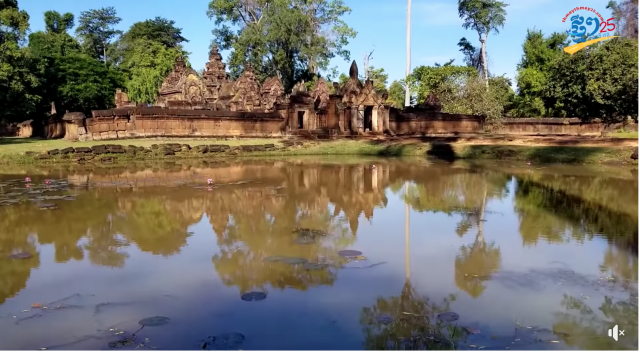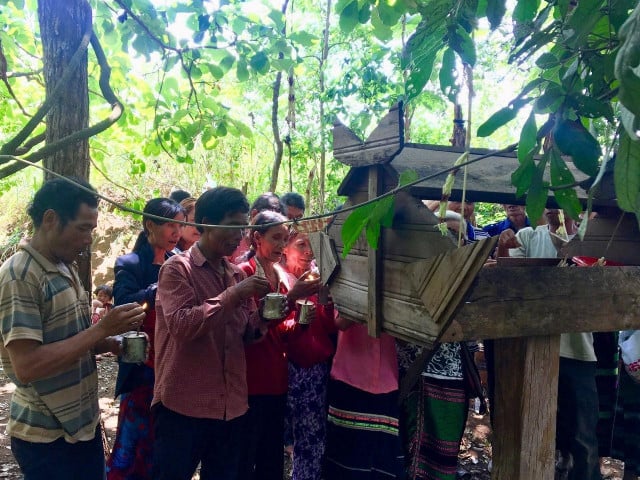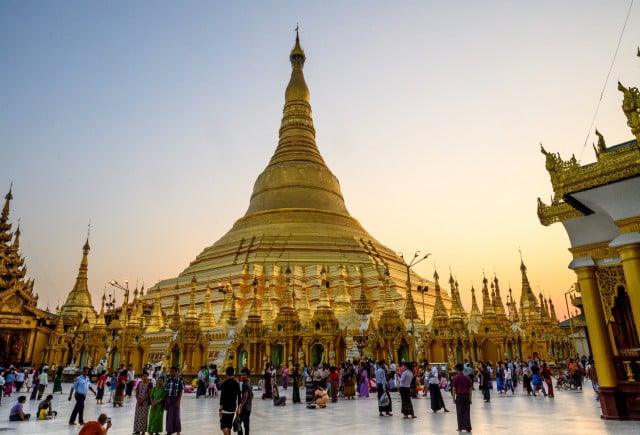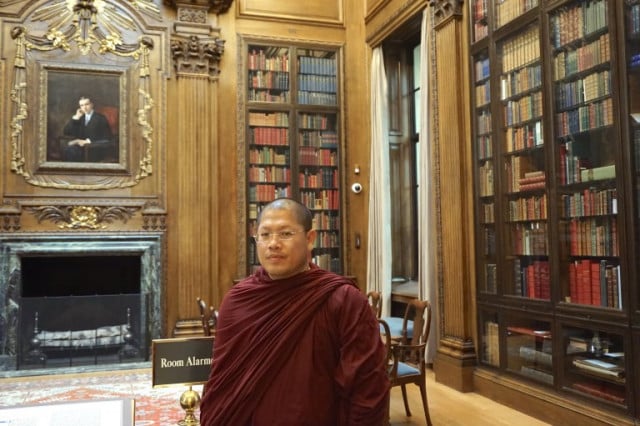Banteay Srei: A Finely-Chiseled Temple of Pink Sandstone

- By Long Ton
- April 14, 2022 1:36 PM
Its shorter name used for convenience may have led to misinterpretation
SIEM REAP–In the district named after it stands the Banteay Srei temple that, for more than a century, archeologists and researchers have described as enchanting, exquisite, a jewel of Khmer art. Dedicated to Narayana and Shiva, the temple was built in the second part of the 10th century during the reigns of King Rajendravarman II and King Jayavarman V under the guidance of royal teacher Yajñavarāha.
When visiting the Banteay Srei temple, it is extremely difficult not to be struck by its splendid and astonishing stone art. The use of "pink" sandstone is a unique feature that sets Banteay Srei apart from the other temples. Even though the temple was erected more than 1,000 years ago, the sculptures still remain today due to the quality of the sandstone. In addition, Banteay Srei’s sculpted features are so precisely detailed that some tourists find it incredibly difficult to believe that they are engraved on blocks and blocks of stones. Many even mistake the surface carved for wood or brick.
The construction elements in the Banteay Srei temple are interesting as well. A noticeable number of laterite stones were incorporated. For instance, laterites were used to build the fortresses, the fields, the gates, the secondary buildings, and the added layers of the towers. Brick was also included in the construction of the central tower’s roof, the library’s (haotrai) roof, the enclosed wall and the western door frames. If we look at a picture of the Banteay Srei temple, it illustrates that wood was one of the materials used for secondary buildings’ roofs and the galleries. Unfortunately, most of the galleries are gone. Only some walls and pillars remain.
The origin of the pink sandstone used at the temple is still being debated among archeologists and experts. Some believe that it was extracted nearby at Kulen Mountain where the sandstone layer is extremely thick and can measure up to 20 meters. However, the composition is lighter than the one we see at the Banteay Srei temple. Hence others think that the origin of the sandstone used may be nearby as some researchers have discovered a hole around 10 meters deep at the foot of a mountain.
Apart from their artistic features, the sculpted elements vividly reflect Hinduism. Illustrated features and decorations are divided into two categories similar to the placement of the deities in the three towers. The central and southern towers were dedicated to Shiva while the northern tower was dedicated to Narayana.
As a result, we can see that the gable and subordinate buildings of the southern and middle towers mostly display the mythical tales of Shiva. Then, the sculptures of the northern tower are mostly related to the mythical tales of Narayana.
When standing perpendicular to the inner temple, one can see some important sculptures such as the those of Shiva Nataraja, or the Lord of the Dance, sculpted on the first gate’s eastern gable when counting from the inside going out. Sculpted on the surface of the southern library, there are scenes of Shiva defeating Asura on the eastern gable and the destruction of Lord Kamadeva on the western gable.
As for the northern library, there are two significant sculptures on each gable. On the eastern gable is a scene of the battle of the Khandava forest between Krishna and Indra. Whereas on the western gable is a depiction of King Kamasak's assassination. Moreover, there are many more sculpted elements associated with other gods including the story of Ramayana.
The temple’s name: the official and popular versions
The name of this temple “Banteay Srei” has led to many interesting interpretations. According to archeologists, the word “Banteay” was actually coined by people who lived around the temple. People in Cambodia have usually described the temples surrounded by huge stone fortifications as “banteay” or “protected base.” This became the norm and was applied to other temples as well, for instance the temples of Banteay Thom, Banteay Ampil, Banteay Kdei and Banteay Samre.
However, what should be taken into serious consideration is the next word “Srei.” The word Srei does not refer to the word “female” as has been interpreted in recent time. In fact, it means power, happiness and fortune. Moreover, the holy lingam symbolizing Shiva, which is in the central tower of the Banteay Srei temple, has been described as the “most divine being of the three worlds.”
During the Angkorian period, the name of the temple was usually chosen according to the most important deity of that temple. Therefore, the full name of the Banteay Srei temple is Tribhuvana Mahesvara, which refers to the Shiva lingam.
The name Banteay Srei has been the result of the Khmer shortening the name of the temple for the sake of convenience.
Long Ton is a Cambodian with a passion for Angkor and that era. A university graduate who speaks several languages, he has conducted tours at Angkor.
Song Daphea contributes to the story.















